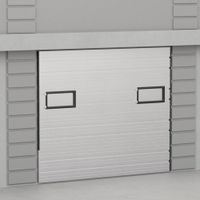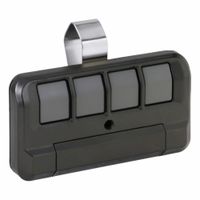Call +(254) 703 030 000 / 751 483 999 / 721 704 777
- Home
- Material Handling
- Dock Loading Equipment
- Dock Doors Curtains Openers
.....Read More
Frequently Asked Questions
What are the benefits of using dock doors and curtains?
Dock doors and curtains offer several benefits in industrial and commercial settings:
1. **Energy Efficiency**: Dock doors and curtains help maintain internal temperatures by minimizing the exchange of air between the inside and outside environments. This reduces energy costs associated with heating or cooling the facility.
2. **Improved Safety**: They provide a barrier that can prevent unauthorized access and protect workers from potential hazards, such as moving equipment or harsh weather conditions.
3. **Pest Control**: By sealing off the loading dock area, dock doors and curtains help prevent pests and insects from entering the facility, which is crucial for maintaining hygiene, especially in food and pharmaceutical industries.
4. **Weather Protection**: They shield the interior from adverse weather conditions, such as rain, snow, and wind, ensuring that goods and equipment remain dry and undamaged.
5. **Noise Reduction**: Dock doors and curtains can help reduce noise pollution from outside, creating a more comfortable working environment for employees.
6. **Operational Efficiency**: They facilitate smoother and faster loading and unloading processes by providing easy access for vehicles and personnel, thus improving overall operational efficiency.
7. **Security**: Dock doors enhance security by controlling access to the facility, reducing the risk of theft or vandalism.
8. **Versatility**: Dock curtains, in particular, offer flexibility as they can be easily opened or closed, allowing for quick adjustments based on operational needs.
9. **Cost-Effectiveness**: Both dock doors and curtains are relatively low-cost solutions that provide significant long-term savings through energy efficiency and reduced maintenance needs.
10. **Compliance**: They help businesses comply with health and safety regulations by maintaining a controlled environment.
Overall, dock doors and curtains are essential components in optimizing the functionality and safety of loading dock operations.
How do garage door openers work?
Garage door openers function through a combination of mechanical and electronic components to automate the process of opening and closing garage doors. The system typically consists of a motorized unit, a drive mechanism, a control system, and safety features.
The motorized unit is the core component, usually mounted on the ceiling of the garage. It contains an electric motor that powers the movement of the door. The motor is connected to a drive mechanism, which can be a chain, belt, or screw drive. Chain drives use a metal chain to move the door, belt drives use a rubber belt for quieter operation, and screw drives use a threaded steel rod for direct lifting.
The control system includes a remote transmitter and a receiver. The remote transmitter, often a handheld device or a car-mounted button, sends a radio signal to the receiver in the motor unit. When the signal is received, the motor activates, moving the door along its tracks.
Safety features are crucial in garage door openers. Most systems include photoelectric sensors placed on either side of the door, near the floor. These sensors emit an infrared beam; if the beam is interrupted, the door will stop closing and reverse to prevent injury or damage. Additionally, modern openers have a manual release mechanism, allowing the door to be opened or closed manually during power outages.
The entire system is powered by electricity, with some models offering battery backup for operation during power failures. Advanced models may include smart technology, allowing control via smartphone apps and integration with home automation systems.
What are the best garage door opener accessories?
The best garage door opener accessories enhance convenience, security, and functionality. Here are some top options:
1. **Smart Garage Door Controllers**: These devices allow you to control your garage door remotely via a smartphone app. They often integrate with smart home systems like Amazon Alexa, Google Assistant, or Apple HomeKit, providing voice control and automation features.
2. **Wireless Keypads**: Mounted outside the garage, these keypads offer keyless entry. They are especially useful for families, allowing multiple users to access the garage without needing a remote or key.
3. **Battery Backup Systems**: Essential for power outages, these systems ensure your garage door opener continues to function, maintaining access and security during emergencies.
4. **Laser Parking Assist**: This accessory projects a laser beam onto your car's dashboard, helping you park in the perfect spot every time, preventing damage to your vehicle and garage.
5. **Garage Door Monitors**: These devices alert you if your garage door is open or closed, providing peace of mind and enhancing security.
6. **Remote Controls**: Additional remotes are useful for multiple vehicles or family members. Some advanced models offer extended range and compatibility with multiple garage doors.
7. **LED Light Bulbs**: Designed specifically for garage door openers, these bulbs resist vibration and interference, providing bright, energy-efficient lighting.
8. **Security Cameras**: Integrated with your garage door system, these cameras offer real-time video monitoring, enhancing security by allowing you to see who is entering or leaving.
9. **Automatic Garage Door Closer**: This accessory automatically closes the garage door after a set period, reducing the risk of leaving it open accidentally.
10. **Weather Seals**: These improve insulation and protect against pests, dust, and moisture, enhancing the garage's comfort and cleanliness.
These accessories can significantly improve the functionality and security of your garage door system.
How can I prevent unauthorized access through dock doors?
To prevent unauthorized access through dock doors, implement the following measures:
1. **Access Control Systems**: Install electronic access control systems with keycards, PIN codes, or biometric scanners to ensure only authorized personnel can open dock doors.
2. **Surveillance Cameras**: Deploy high-resolution CCTV cameras to monitor dock areas continuously. Ensure cameras cover all entry points and blind spots, and integrate them with motion detection and alert systems.
3. **Physical Barriers**: Use physical barriers such as bollards, gates, or fences around dock areas to deter unauthorized entry. Ensure dock doors are robust and equipped with secure locking mechanisms.
4. **Security Personnel**: Employ security guards to patrol dock areas and monitor access points. Train them to recognize suspicious behavior and respond to security breaches.
5. **Lighting**: Ensure adequate lighting around dock areas to deter unauthorized access and improve visibility for surveillance cameras and security personnel.
6. **Alarm Systems**: Install alarm systems on dock doors that trigger when unauthorized access is attempted. Integrate alarms with security systems for immediate response.
7. **Visitor Management**: Implement a visitor management system to track and control access for non-employees. Require visitors to sign in and be escorted by authorized personnel.
8. **Employee Training**: Conduct regular security training for employees to raise awareness about potential threats and proper procedures for securing dock areas.
9. **Regular Audits**: Perform regular security audits to identify vulnerabilities and ensure all security measures are functioning effectively.
10. **Policy Enforcement**: Develop and enforce strict security policies regarding dock access, including protocols for reporting and responding to security incidents.
By combining these strategies, you can significantly reduce the risk of unauthorized access through dock doors.
What maintenance is required for garage door hardware?
Regular maintenance of garage door hardware is essential to ensure smooth operation and longevity. Key maintenance tasks include:
1. **Inspection**: Regularly inspect all components, including springs, cables, rollers, and tracks, for signs of wear, rust, or damage.
2. **Lubrication**: Apply a high-quality lubricant to moving parts such as rollers, hinges, and tracks to reduce friction and noise. Avoid lubricating plastic parts.
3. **Tightening Hardware**: Check and tighten all bolts and screws, as they can loosen over time due to the door's movement.
4. **Balance Testing**: Disconnect the opener and manually lift the door halfway. If it stays in place, it's balanced. If not, it may require spring adjustment by a professional.
5. **Track Cleaning**: Clean the tracks with a damp cloth to remove debris and ensure the door moves smoothly. Avoid using lubricants on the tracks.
6. **Weatherstripping**: Inspect and replace weatherstripping at the bottom of the door to prevent drafts and moisture.
7. **Safety Features**: Test the auto-reverse feature by placing an object in the door's path. The door should reverse upon contact. Adjust the opener settings if necessary.
8. **Opener Maintenance**: Check the opener's settings, replace remote batteries, and ensure the safety sensors are aligned and clean.
9. **Spring and Cable Inspection**: Look for signs of wear or damage. These components are under high tension and should only be adjusted or replaced by professionals.
10. **Professional Inspection**: Schedule annual professional maintenance to address complex issues and ensure all components are in optimal condition.
Regular maintenance not only extends the life of your garage door but also enhances safety and efficiency.
How do I choose the right garage door opener for my needs?
1. **Type of Drive System**: Choose between chain-drive (durable and affordable), belt-drive (quieter and smoother), and screw-drive (faster and requires less maintenance).
2. **Horsepower**: Match the horsepower to the door size and weight. Standard single doors typically need 1/2 HP, while heavier or double doors may require 3/4 HP or more.
3. **Noise Level**: Consider a belt-drive opener for quieter operation, especially if the garage is attached to living spaces.
4. **Security Features**: Look for openers with rolling code technology to prevent code theft. Some models offer additional security features like automatic locks.
5. **Smart Technology**: Opt for openers with Wi-Fi connectivity for remote access and control via smartphone apps. This feature can also provide alerts and integrate with smart home systems.
6. **Battery Backup**: Ensure the opener has a battery backup to operate during power outages, maintaining access and security.
7. **Safety Features**: Check for safety sensors that prevent the door from closing on objects or people. Auto-reverse mechanisms are essential for safety.
8. **Installation and Maintenance**: Consider ease of installation if you plan to DIY. Some models offer simpler installation processes. Also, check for maintenance requirements.
9. **Warranty and Support**: Look for a model with a good warranty and reliable customer support to ensure long-term satisfaction and assistance if needed.
10. **Budget**: Balance features with your budget. While advanced features add cost, they can offer convenience and security benefits.
11. **Brand Reputation**: Research brands for reliability and customer reviews to ensure you choose a reputable manufacturer.
12. **Local Regulations**: Check local building codes or HOA regulations that might affect your choice of garage door opener.
What are the common issues with garage door openers and how can they be fixed?
Common issues with garage door openers include:
1. **Remote Control Malfunction**:
- **Fix**: Replace batteries, check for interference, or reprogram the remote.
2. **Door Doesn’t Open or Close Completely**:
- **Fix**: Adjust the limit settings on the opener, check for obstructions, or ensure the tracks are aligned.
3. **Noisy Operation**:
- **Fix**: Lubricate moving parts, tighten loose hardware, or replace worn rollers.
4. **Door Reverses Before Closing**:
- **Fix**: Adjust the close force setting, check for obstructions, or realign the safety sensors.
5. **Opener Doesn’t Respond to Wall Switch**:
- **Fix**: Check the power supply, inspect the wiring, or replace the wall switch.
6. **Motor Runs but Door Doesn’t Move**:
- **Fix**: Reconnect the trolley to the opener, check the chain/belt drive, or replace broken parts.
7. **Door Opens Randomly**:
- **Fix**: Check for interference, reprogram the remote, or inspect the wiring for shorts.
8. **Slow Operation**:
- **Fix**: Lubricate the tracks and rollers, or adjust the speed settings if available.
9. **Sagging Door**:
- **Fix**: Tighten the tension on the torsion springs or replace them if necessary.
10. **Keypad Doesn’t Work**:
- **Fix**: Replace the batteries, reprogram the keypad, or check for wiring issues.
Regular maintenance, such as lubricating moving parts and checking for wear and tear, can prevent many of these issues. If problems persist, consulting a professional may be necessary.



